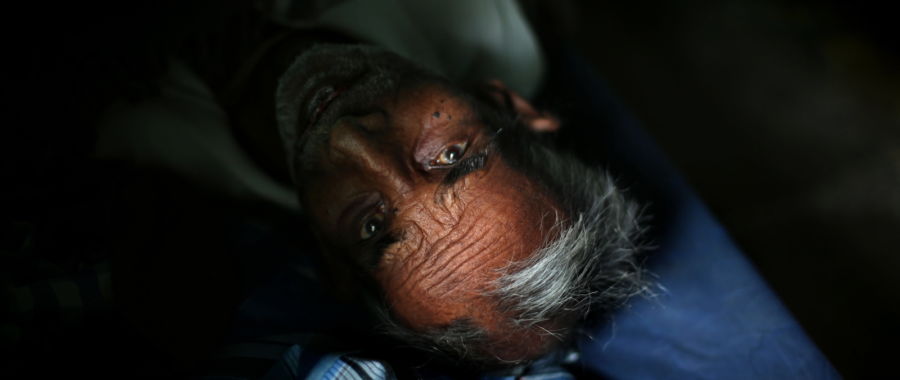
Fot. EPA/PIYAL ADHIKARY
Ośrodek dla trędowatych założony przez świętą Matkę Teresę [GALERIA]
Ośrodek dla trędowatych Gandhiji Prem Nivas założony przez Matkę Teresę z Kalkuty we Wschodnim Bengalu, Indie.
- epa07220751 (11/23) Leprosy patients volunteer to distribute lunch to admitted patients at at the Gandhiji Prem Nivas Leprosy Centre outside Titagarh, West Bengal, eastern India, 30 November 2018. Leprosy is one of the oldest infectious diseases known to man. It primarily affects the skin, nerves, eyes and upper respiratory tract, but the disease is curable and treatment in its early stages can prevent disability, according to the World Health Organization (WHO). Outside the city of Titagarh, in the Indian state of West Bengal, Mother Teresa in 1958 established the Gandhiji Prem Nivas Leprosy Center. Run by her Missionaries of Charity, the center was built for an existing community of people with leprosy. Now, more than 1,000 people – those affected and their families – live and work on the premises. Residents who have recovered from the disease work as weavers at the center and produce the blue and white sarees worn by Charity nuns. Children of patients are provided with free education at the center, which also offers free food, basic health care and psychological treatment to its residents. The facility is run with the help of donations and the support of the WHO, which in Apr. 2016 launched the Global Leprosy Strategy 2016-2020, aimed at the worldwide elimination of the disease. Gandhiji Prem Nivas is taking part in the WHO program alongside other hospitals in India. It provides treatments recommended by the WHO not only to patients residing at the center, but also to other leprosy-affected people needing medical attention. EPA/PIYAL ADHIKARY ATTENTION: For the full PHOTO ESSAY text please see Advisory Notice epa07220740 Dostawca: PAP/EPA.
- epa07220752 (12/23) Leprosy patients pray before lunch at the Gandhiji Prem Nivas Leprosy Centre outside Titagarh, West Bengal, eastern India, 30 November 2018. Leprosy is one of the oldest infectious diseases known to man. It primarily affects the skin, nerves, eyes and upper respiratory tract, but the disease is curable and treatment in its early stages can prevent disability, according to the World Health Organization (WHO). Outside the city of Titagarh, in the Indian state of West Bengal, Mother Teresa in 1958 established the Gandhiji Prem Nivas Leprosy Center. Run by her Missionaries of Charity, the center was built for an existing community of people with leprosy. Now, more than 1,000 people – those affected and their families – live and work on the premises. Residents who have recovered from the disease work as weavers at the center and produce the blue and white sarees worn by Charity nuns. Children of patients are provided with free education at the center, which also offers free food, basic health care and psychological treatment to its residents. The facility is run with the help of donations and the support of the WHO, which in Apr. 2016 launched the Global Leprosy Strategy 2016-2020, aimed at the worldwide elimination of the disease. Gandhiji Prem Nivas is taking part in the WHO program alongside other hospitals in India. It provides treatments recommended by the WHO not only to patients residing at the center, but also to other leprosy-affected people needing medical attention. EPA/PIYAL ADHIKARY ATTENTION: For the full PHOTO ESSAY text please see Advisory Notice epa07220740 Dostawca: PAP/EPA.
- epa07220753 (13/23) A volunteer (L) feeds lunch to a leprosy patient at the Gandhiji Prem Nivas Leprosy Centre outside Titagarh, West Bengal, eastern India, 30 November 2018. Leprosy is one of the oldest infectious diseases known to man. It primarily affects the skin, nerves, eyes and upper respiratory tract, but the disease is curable and treatment in its early stages can prevent disability, according to the World Health Organization (WHO). Outside the city of Titagarh, in the Indian state of West Bengal, Mother Teresa in 1958 established the Gandhiji Prem Nivas Leprosy Center. Run by her Missionaries of Charity, the center was built for an existing community of people with leprosy. Now, more than 1,000 people – those affected and their families – live and work on the premises. Residents who have recovered from the disease work as weavers at the center and produce the blue and white sarees worn by Charity nuns. Children of patients are provided with free education at the center, which also offers free food, basic health care and psychological treatment to its residents. The facility is run with the help of donations and the support of the WHO, which in Apr. 2016 launched the Global Leprosy Strategy 2016-2020, aimed at the worldwide elimination of the disease. Gandhiji Prem Nivas is taking part in the WHO program alongside other hospitals in India. It provides treatments recommended by the WHO not only to patients residing at the center, but also to other leprosy-affected people needing medical attention. EPA/PIYAL ADHIKARY ATTENTION: For the full PHOTO ESSAY text please see Advisory Notice epa07220740 Dostawca: PAP/EPA.
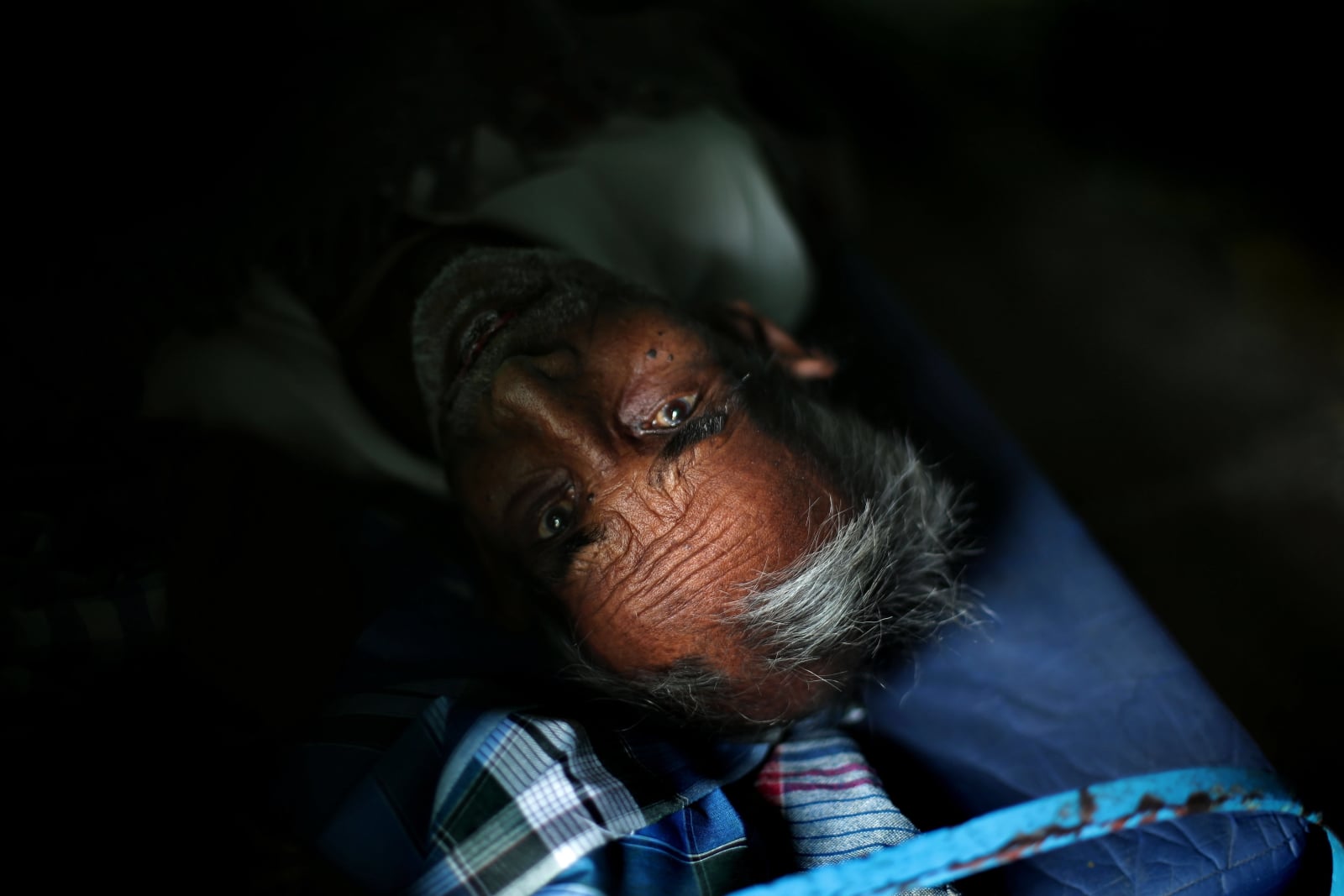
- epa07220755 (15/23) A leprosy-affected teacher (L) prays with children of patients at the Gandhiji Prem Nivas Leprosy Centre outside Titagarh, West Bengal, eastern India, 08 August 2018. Leprosy is one of the oldest infectious diseases known to man. It primarily affects the skin, nerves, eyes and upper respiratory tract, but the disease is curable and treatment in its early stages can prevent disability, according to the World Health Organization (WHO). Outside the city of Titagarh, in the Indian state of West Bengal, Mother Teresa in 1958 established the Gandhiji Prem Nivas Leprosy Center. Run by her Missionaries of Charity, the center was built for an existing community of people with leprosy. Now, more than 1,000 people – those affected and their families – live and work on the premises. Residents who have recovered from the disease work as weavers at the center and produce the blue and white sarees worn by Charity nuns. Children of patients are provided with free education at the center, which also offers free food, basic health care and psychological treatment to its residents. The facility is run with the help of donations and the support of the WHO, which in Apr. 2016 launched the Global Leprosy Strategy 2016-2020, aimed at the worldwide elimination of the disease. Gandhiji Prem Nivas is taking part in the WHO program alongside other hospitals in India. It provides treatments recommended by the WHO not only to patients residing at the center, but also to other leprosy-affected people needing medical attention. EPA/PIYAL ADHIKARY ATTENTION: For the full PHOTO ESSAY text please see Advisory Notice epa07220740 Dostawca: PAP/EPA.
- epa07220756 (16/23) Children of leprosy patients rest at the Gandhiji Prem Nivas Leprosy Centre outside Titagarh, West Bengal, eastern India, 30 November 2018. Leprosy is one of the oldest infectious diseases known to man. It primarily affects the skin, nerves, eyes and upper respiratory tract, but the disease is curable and treatment in its early stages can prevent disability, according to the World Health Organization (WHO). Outside the city of Titagarh, in the Indian state of West Bengal, Mother Teresa in 1958 established the Gandhiji Prem Nivas Leprosy Center. Run by her Missionaries of Charity, the center was built for an existing community of people with leprosy. Now, more than 1,000 people – those affected and their families – live and work on the premises. Residents who have recovered from the disease work as weavers at the center and produce the blue and white sarees worn by Charity nuns. Children of patients are provided with free education at the center, which also offers free food, basic health care and psychological treatment to its residents. The facility is run with the help of donations and the support of the WHO, which in Apr. 2016 launched the Global Leprosy Strategy 2016-2020, aimed at the worldwide elimination of the disease. Gandhiji Prem Nivas is taking part in the WHO program alongside other hospitals in India. It provides treatments recommended by the WHO not only to patients residing at the center, but also to other leprosy-affected people needing medical attention. EPA/PIYAL ADHIKARY ATTENTION: For the full PHOTO ESSAY text please see Advisory Notice epa07220740 Dostawca: PAP/EPA.
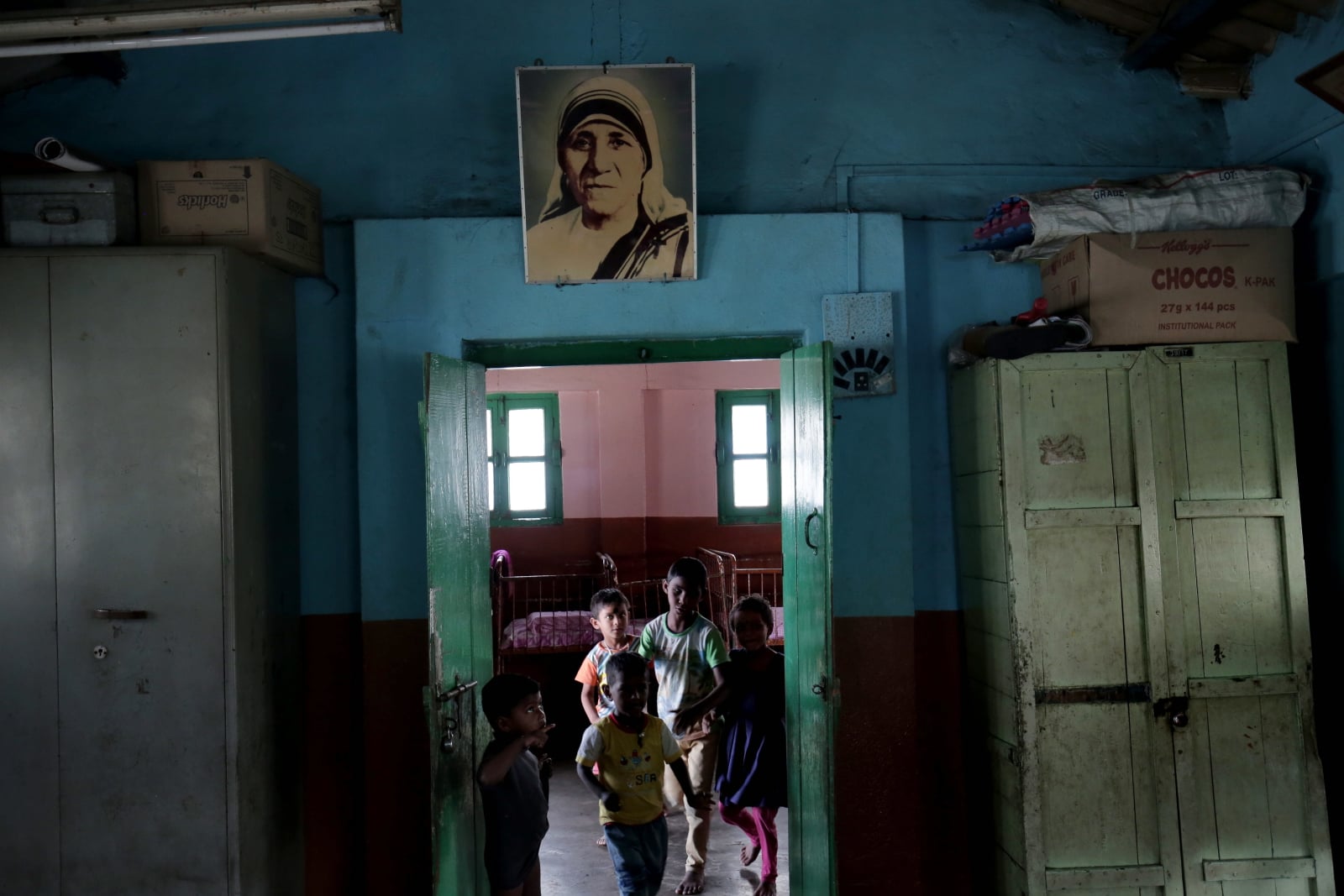
- epa07220758 (18/23) Leprosy patients work with handlooms to weave sarees worn by Missionaries of Charity nuns at the Gandhiji Prem Nivas Leprosy Centre outside Titagarh, West Bengal, eastern India, 25 July 2018. Leprosy is one of the oldest infectious diseases known to man. It primarily affects the skin, nerves, eyes and upper respiratory tract, but the disease is curable and treatment in its early stages can prevent disability, according to the World Health Organization (WHO). Outside the city of Titagarh, in the Indian state of West Bengal, Mother Teresa in 1958 established the Gandhiji Prem Nivas Leprosy Center. Run by her Missionaries of Charity, the center was built for an existing community of people with leprosy. Now, more than 1,000 people – those affected and their families – live and work on the premises. Residents who have recovered from the disease work as weavers at the center and produce the blue and white sarees worn by Charity nuns. Children of patients are provided with free education at the center, which also offers free food, basic health care and psychological treatment to its residents. The facility is run with the help of donations and the support of the WHO, which in Apr. 2016 launched the Global Leprosy Strategy 2016-2020, aimed at the worldwide elimination of the disease. Gandhiji Prem Nivas is taking part in the WHO program alongside other hospitals in India. It provides treatments recommended by the WHO not only to patients residing at the center, but also to other leprosy-affected people needing medical attention. EPA/PIYAL ADHIKARY ATTENTION: For the full PHOTO ESSAY text please see Advisory Notice epa07220740 Dostawca: PAP/EPA.
- epa07220759 (19/23) A leprosy patient handles a spinning wheel as workers weave sarees worn by Missionaries of Charity nuns at the Gandhiji Prem Nivas Leprosy Centre outside Titagarh, West Bengal, eastern India, 25 July 2018. Leprosy is one of the oldest infectious diseases known to man. It primarily affects the skin, nerves, eyes and upper respiratory tract, but the disease is curable and treatment in its early stages can prevent disability, according to the World Health Organization (WHO). Outside the city of Titagarh, in the Indian state of West Bengal, Mother Teresa in 1958 established the Gandhiji Prem Nivas Leprosy Center. Run by her Missionaries of Charity, the center was built for an existing community of people with leprosy. Now, more than 1,000 people – those affected and their families – live and work on the premises. Residents who have recovered from the disease work as weavers at the center and produce the blue and white sarees worn by Charity nuns. Children of patients are provided with free education at the center, which also offers free food, basic health care and psychological treatment to its residents. The facility is run with the help of donations and the support of the WHO, which in Apr. 2016 launched the Global Leprosy Strategy 2016-2020, aimed at the worldwide elimination of the disease. Gandhiji Prem Nivas is taking part in the WHO program alongside other hospitals in India. It provides treatments recommended by the WHO not only to patients residing at the center, but also to other leprosy-affected people needing medical attention. EPA/PIYAL ADHIKARY ATTENTION: For the full PHOTO ESSAY text please see Advisory Notice epa07220740 Dostawca: PAP/EPA.
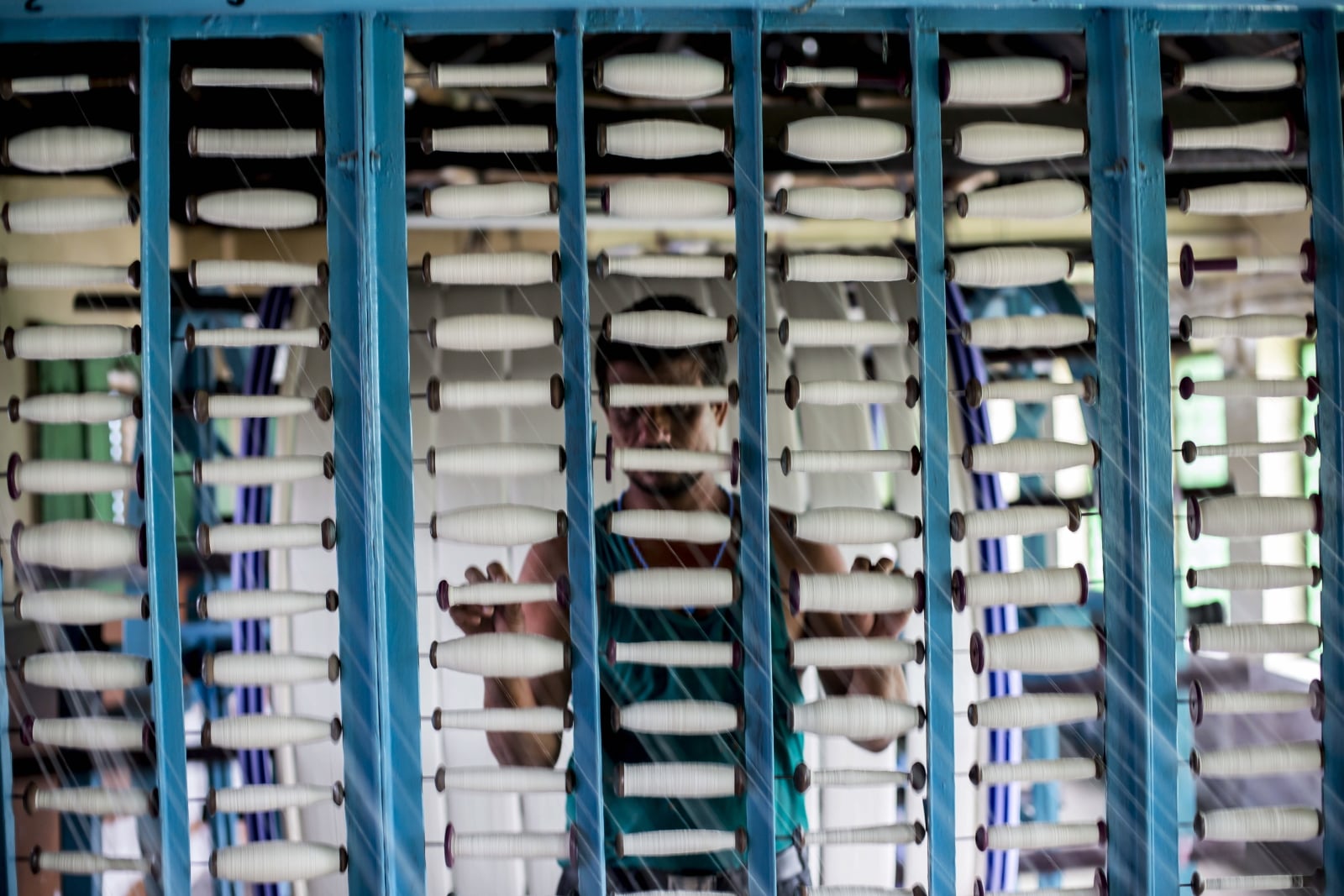
- epa07220761 (21/23) A leprosy patient handles a spinning wheel as workers weave sarees worn by Missionaries of Charity nuns at the Gandhiji Prem Nivas Leprosy Centre outside Titagarh, West Bengal, eastern India, 25 July 2018. Leprosy is one of the oldest infectious diseases known to man. It primarily affects the skin, nerves, eyes and upper respiratory tract, but the disease is curable and treatment in its early stages can prevent disability, according to the World Health Organization (WHO). Outside the city of Titagarh, in the Indian state of West Bengal, Mother Teresa in 1958 established the Gandhiji Prem Nivas Leprosy Center. Run by her Missionaries of Charity, the center was built for an existing community of people with leprosy. Now, more than 1,000 people – those affected and their families – live and work on the premises. Residents who have recovered from the disease work as weavers at the center and produce the blue and white sarees worn by Charity nuns. Children of patients are provided with free education at the center, which also offers free food, basic health care and psychological treatment to its residents. The facility is run with the help of donations and the support of the WHO, which in Apr. 2016 launched the Global Leprosy Strategy 2016-2020, aimed at the worldwide elimination of the disease. Gandhiji Prem Nivas is taking part in the WHO program alongside other hospitals in India. It provides treatments recommended by the WHO not only to patients residing at the center, but also to other leprosy-affected people needing medical attention. EPA/PIYAL ADHIKARY ATTENTION: For the full PHOTO ESSAY text please see Advisory Notice epa07220740 Dostawca: PAP/EPA.
- epa07220762 (22/23) Leprosy patients work with handlooms to weave sarees worn by Missionaries of Charity nuns at the Gandhiji Prem Nivas Leprosy Centre outside Titagarh, West Bengal, eastern India, 25 July 2018. Leprosy is one of the oldest infectious diseases known to man. It primarily affects the skin, nerves, eyes and upper respiratory tract, but the disease is curable and treatment in its early stages can prevent disability, according to the World Health Organization (WHO). Outside the city of Titagarh, in the Indian state of West Bengal, Mother Teresa in 1958 established the Gandhiji Prem Nivas Leprosy Center. Run by her Missionaries of Charity, the center was built for an existing community of people with leprosy. Now, more than 1,000 people – those affected and their families – live and work on the premises. Residents who have recovered from the disease work as weavers at the center and produce the blue and white sarees worn by Charity nuns. Children of patients are provided with free education at the center, which also offers free food, basic health care and psychological treatment to its residents. The facility is run with the help of donations and the support of the WHO, which in Apr. 2016 launched the Global Leprosy Strategy 2016-2020, aimed at the worldwide elimination of the disease. Gandhiji Prem Nivas is taking part in the WHO program alongside other hospitals in India. It provides treatments recommended by the WHO not only to patients residing at the center, but also to other leprosy-affected people needing medical attention. EPA/PIYAL ADHIKARY ATTENTION: For the full PHOTO ESSAY text please see Advisory Notice epa07220740 Dostawca: PAP/EPA.
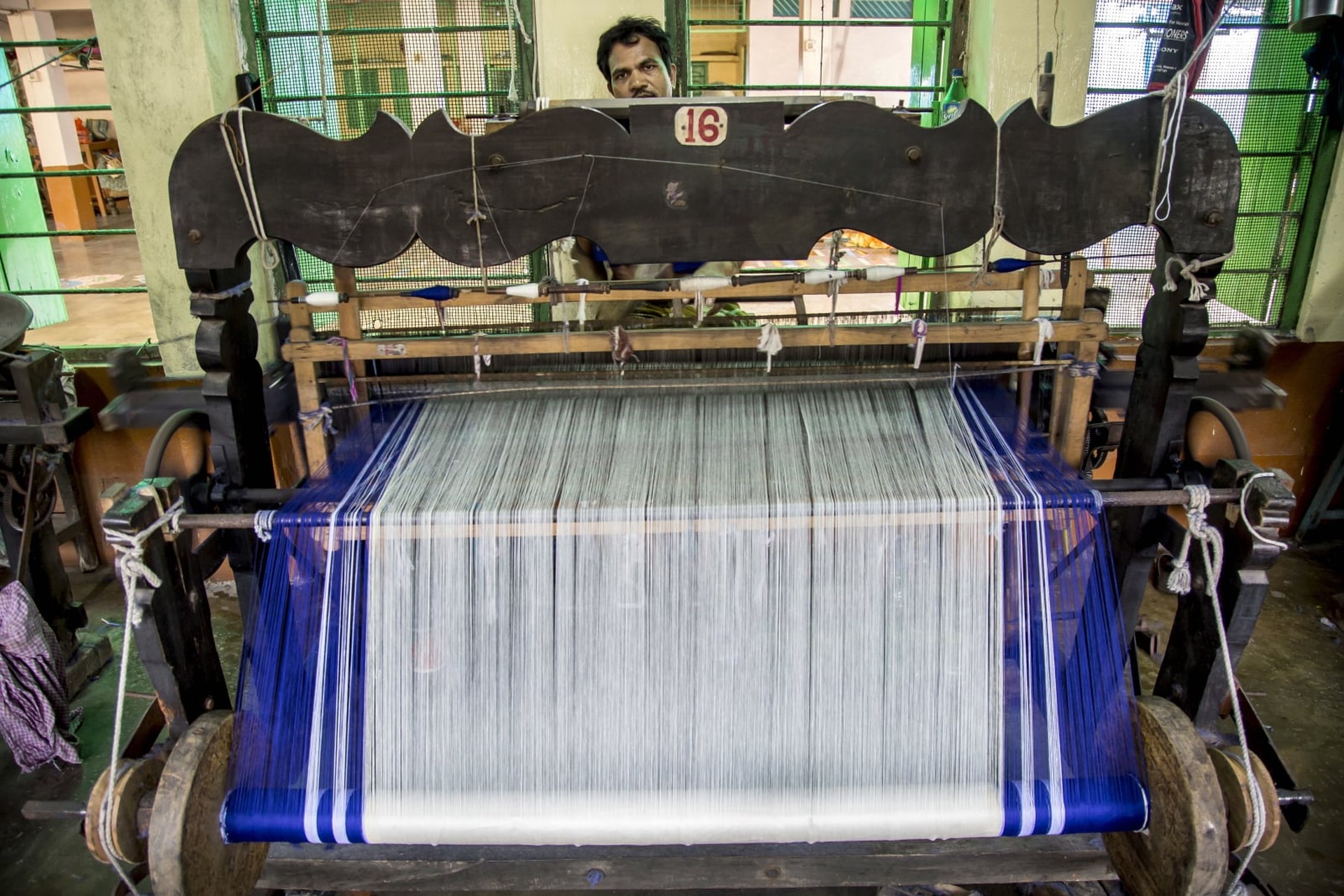
- epa07220741 (01/23) A leprosy patient waits for treatment at the Gandhiji Prem Nivas Leprosy Centre outside Titagarh, West Bengal, eastern India, 30 November 2018. Leprosy is one of the oldest infectious diseases known to man. It primarily affects the skin, nerves, eyes and upper respiratory tract, but the disease is curable and treatment in its early stages can prevent disability, according to the World Health Organization (WHO). Outside the city of Titagarh, in the Indian state of West Bengal, Mother Teresa in 1958 established the Gandhiji Prem Nivas Leprosy Center. Run by her Missionaries of Charity, the center was built for an existing community of people with leprosy. Now, more than 1,000 people – those affected and their families – live and work on the premises. Residents who have recovered from the disease work as weavers at the center and produce the blue and white sarees worn by Charity nuns. Children of patients are provided with free education at the center, which also offers free food, basic health care and psychological treatment to its residents. The facility is run with the help of donations and the support of the WHO, which in Apr. 2016 launched the Global Leprosy Strategy 2016-2020, aimed at the worldwide elimination of the disease. Gandhiji Prem Nivas is taking part in the WHO program alongside other hospitals in India. It provides treatments recommended by the WHO not only to patients residing at the center, but also to other leprosy-affected people needing medical attention. EPA/PIYAL ADHIKARY ATTENTION: For the full PHOTO ESSAY text please see Advisory Notice epa07220740 Dostawca: PAP/EPA.
- epa07220742 (02/23) Leprosy patients visit the Gandhiji Prem Nivas Leprosy Centre outside Titagarh, West Bengal, eastern India, 08 August 2018. Leprosy is one of the oldest infectious diseases known to man. It primarily affects the skin, nerves, eyes and upper respiratory tract, but the disease is curable and treatment in its early stages can prevent disability, according to the World Health Organization (WHO). Outside the city of Titagarh, in the Indian state of West Bengal, Mother Teresa in 1958 established the Gandhiji Prem Nivas Leprosy Center. Run by her Missionaries of Charity, the center was built for an existing community of people with leprosy. Now, more than 1,000 people – those affected and their families – live and work on the premises. Residents who have recovered from the disease work as weavers at the center and produce the blue and white sarees worn by Charity nuns. Children of patients are provided with free education at the center, which also offers free food, basic health care and psychological treatment to its residents. The facility is run with the help of donations and the support of the WHO, which in Apr. 2016 launched the Global Leprosy Strategy 2016-2020, aimed at the worldwide elimination of the disease. Gandhiji Prem Nivas is taking part in the WHO program alongside other hospitals in India. It provides treatments recommended by the WHO not only to patients residing at the center, but also to other leprosy-affected people needing medical attention. EPA/PIYAL ADHIKARY ATTENTION: For the full PHOTO ESSAY text please see Advisory Notice epa07220740 Dostawca: PAP/EPA.
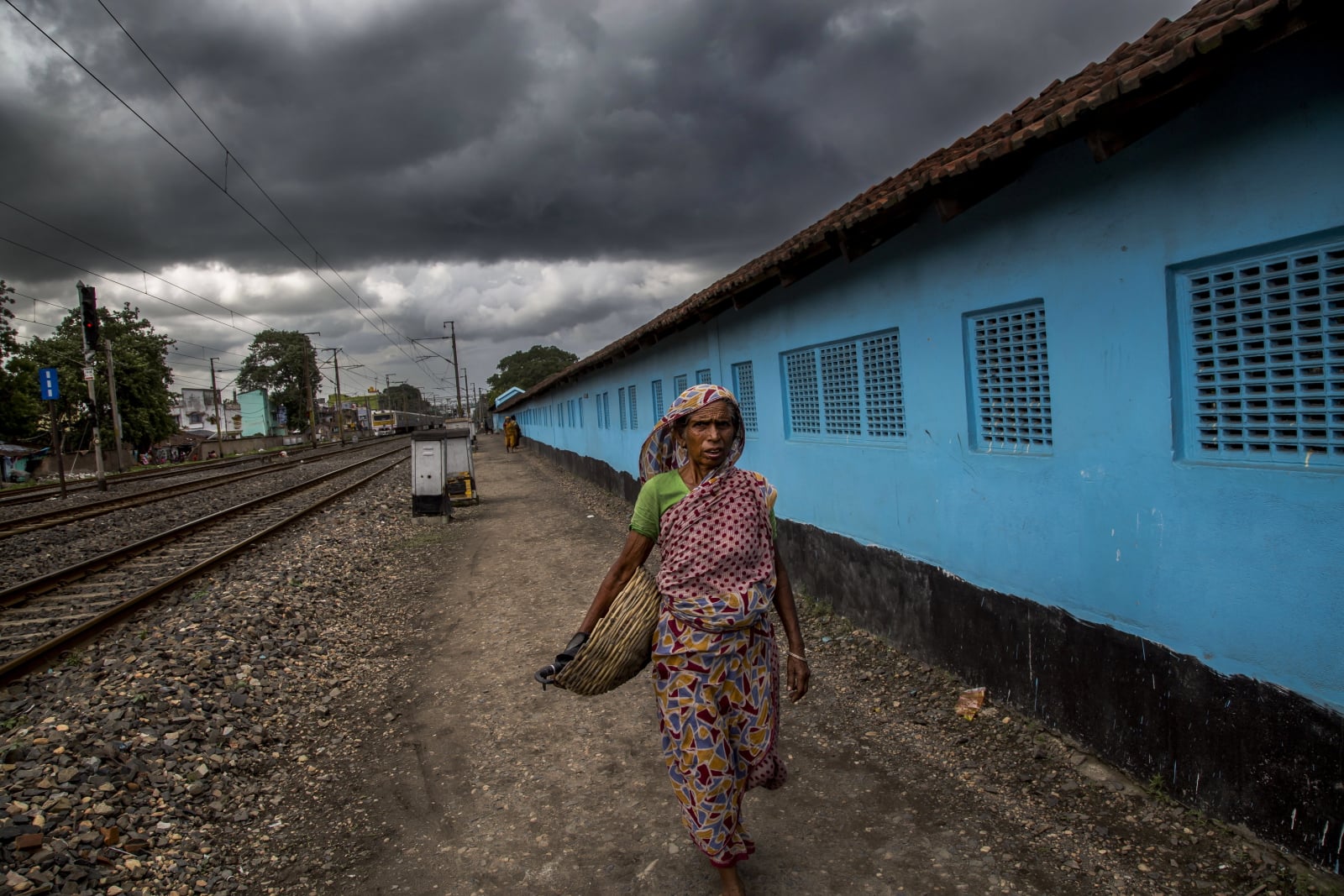
- epa07220744 (04/23) A leprosy patient waits for treatment at the Gandhiji Prem Nivas Leprosy Centre outside Titagarh, West Bengal, eastern India, 25 July 2018. Leprosy is one of the oldest infectious diseases known to man. It primarily affects the skin, nerves, eyes and upper respiratory tract, but the disease is curable and treatment in its early stages can prevent disability, according to the World Health Organization (WHO). Outside the city of Titagarh, in the Indian state of West Bengal, Mother Teresa in 1958 established the Gandhiji Prem Nivas Leprosy Center. Run by her Missionaries of Charity, the center was built for an existing community of people with leprosy. Now, more than 1,000 people – those affected and their families – live and work on the premises. Residents who have recovered from the disease work as weavers at the center and produce the blue and white sarees worn by Charity nuns. Children of patients are provided with free education at the center, which also offers free food, basic health care and psychological treatment to its residents. The facility is run with the help of donations and the support of the WHO, which in Apr. 2016 launched the Global Leprosy Strategy 2016-2020, aimed at the worldwide elimination of the disease. Gandhiji Prem Nivas is taking part in the WHO program alongside other hospitals in India. It provides treatments recommended by the WHO not only to patients residing at the center, but also to other leprosy-affected people needing medical attention. EPA/PIYAL ADHIKARY ATTENTION: For the full PHOTO ESSAY text please see Advisory Notice epa07220740 Dostawca: PAP/EPA.
- epa07220745 (05/23) A leprosy patient receives treatment at the Gandhiji Prem Nivas Leprosy Centre outside Titagarh, West Bengal, eastern India, 08 August 2018. Leprosy is one of the oldest infectious diseases known to man. It primarily affects the skin, nerves, eyes and upper respiratory tract, but the disease is curable and treatment in its early stages can prevent disability, according to the World Health Organization (WHO). Outside the city of Titagarh, in the Indian state of West Bengal, Mother Teresa in 1958 established the Gandhiji Prem Nivas Leprosy Center. Run by her Missionaries of Charity, the center was built for an existing community of people with leprosy. Now, more than 1,000 people – those affected and their families – live and work on the premises. Residents who have recovered from the disease work as weavers at the center and produce the blue and white sarees worn by Charity nuns. Children of patients are provided with free education at the center, which also offers free food, basic health care and psychological treatment to its residents. The facility is run with the help of donations and the support of the WHO, which in Apr. 2016 launched the Global Leprosy Strategy 2016-2020, aimed at the worldwide elimination of the disease. Gandhiji Prem Nivas is taking part in the WHO program alongside other hospitals in India. It provides treatments recommended by the WHO not only to patients residing at the center, but also to other leprosy-affected people needing medical attention. EPA/PIYAL ADHIKARY ATTENTION: For the full PHOTO ESSAY text please see Advisory Notice epa07220740 Dostawca: PAP/EPA.

- epa07220747 (07/23) A leprosy patient shows his hands at the Gandhiji Prem Nivas Leprosy Centre outside Titagarh, West Bengal, eastern India, 30 November 2018. Leprosy is one of the oldest infectious diseases known to man. It primarily affects the skin, nerves, eyes and upper respiratory tract, but the disease is curable and treatment in its early stages can prevent disability, according to the World Health Organization (WHO). Outside the city of Titagarh, in the Indian state of West Bengal, Mother Teresa in 1958 established the Gandhiji Prem Nivas Leprosy Center. Run by her Missionaries of Charity, the center was built for an existing community of people with leprosy. Now, more than 1,000 people – those affected and their families – live and work on the premises. Residents who have recovered from the disease work as weavers at the center and produce the blue and white sarees worn by Charity nuns. Children of patients are provided with free education at the center, which also offers free food, basic health care and psychological treatment to its residents. The facility is run with the help of donations and the support of the WHO, which in Apr. 2016 launched the Global Leprosy Strategy 2016-2020, aimed at the worldwide elimination of the disease. Gandhiji Prem Nivas is taking part in the WHO program alongside other hospitals in India. It provides treatments recommended by the WHO not only to patients residing at the center, but also to other leprosy-affected people needing medical attention. EPA/PIYAL ADHIKARY ATTENTION: For the full PHOTO ESSAY text please see Advisory Notice epa07220740 Dostawca: PAP/EPA.
- fot. EPA/PIYAL ADHIKARY
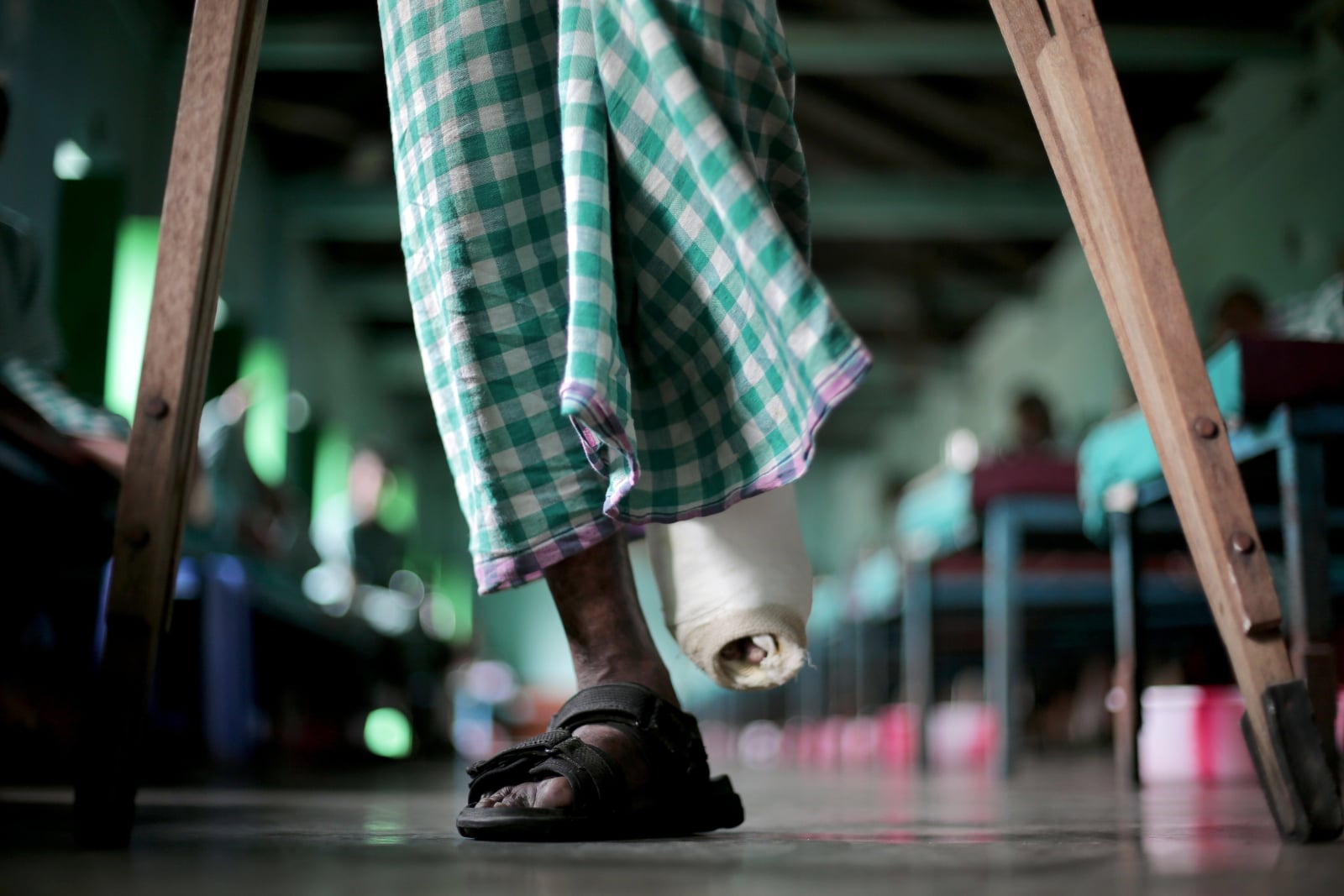
- epa07220750 (10/23) Leprosy patients prepare lunch at the Gandhiji Prem Nivas Leprosy Centre outside Titagarh, West Bengal, eastern India, 25 July 2018. Leprosy is one of the oldest infectious diseases known to man. It primarily affects the skin, nerves, eyes and upper respiratory tract, but the disease is curable and treatment in its early stages can prevent disability, according to the World Health Organization (WHO). Outside the city of Titagarh, in the Indian state of West Bengal, Mother Teresa in 1958 established the Gandhiji Prem Nivas Leprosy Center. Run by her Missionaries of Charity, the center was built for an existing community of people with leprosy. Now, more than 1,000 people – those affected and their families – live and work on the premises. Residents who have recovered from the disease work as weavers at the center and produce the blue and white sarees worn by Charity nuns. Children of patients are provided with free education at the center, which also offers free food, basic health care and psychological treatment to its residents. The facility is run with the help of donations and the support of the WHO, which in Apr. 2016 launched the Global Leprosy Strategy 2016-2020, aimed at the worldwide elimination of the disease. Gandhiji Prem Nivas is taking part in the WHO program alongside other hospitals in India. It provides treatments recommended by the WHO not only to patients residing at the center, but also to other leprosy-affected people needing medical attention. EPA/PIYAL ADHIKARY ATTENTION: For the full PHOTO ESSAY text please see Advisory Notice epa07220740 Dostawca: PAP/EPA.









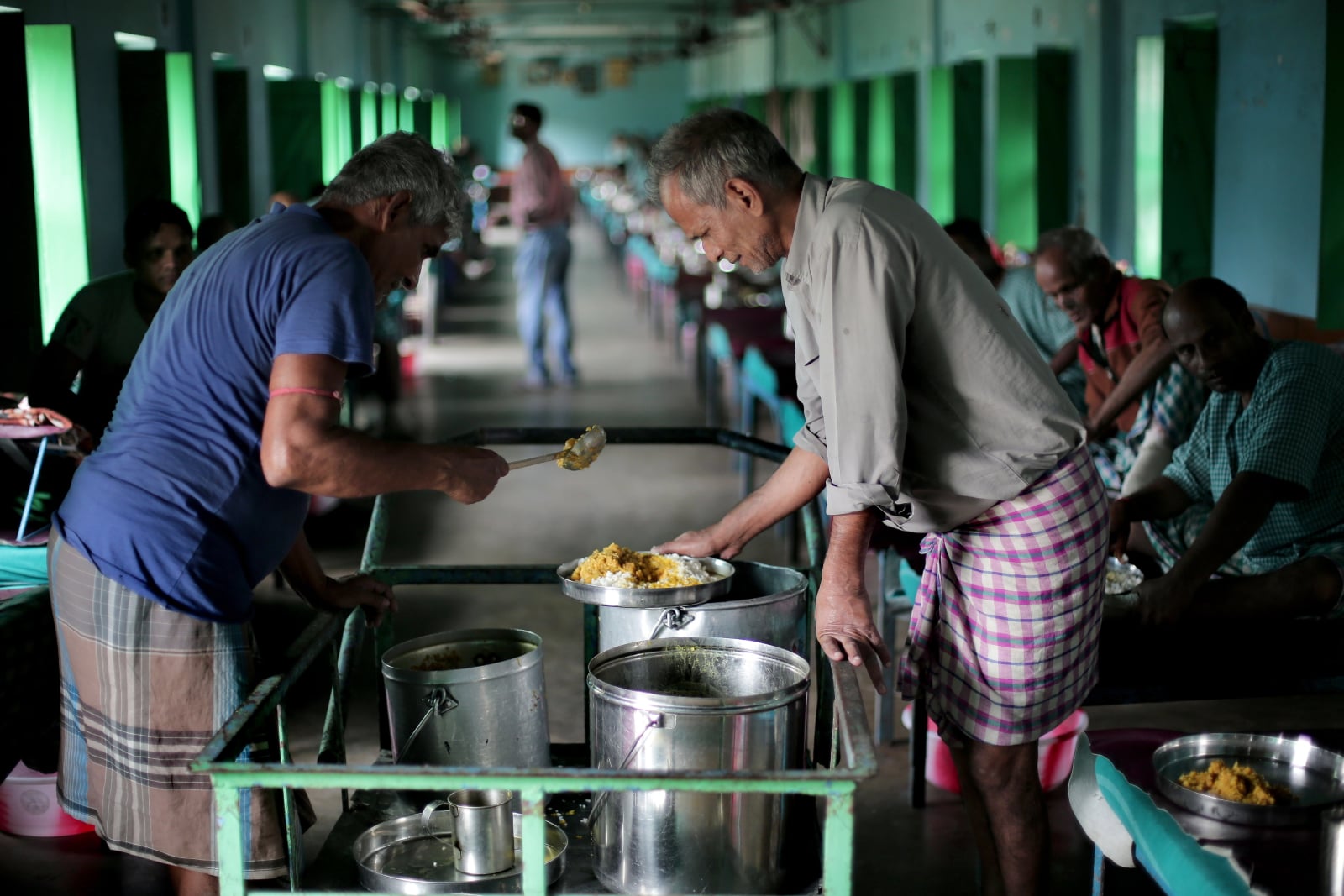
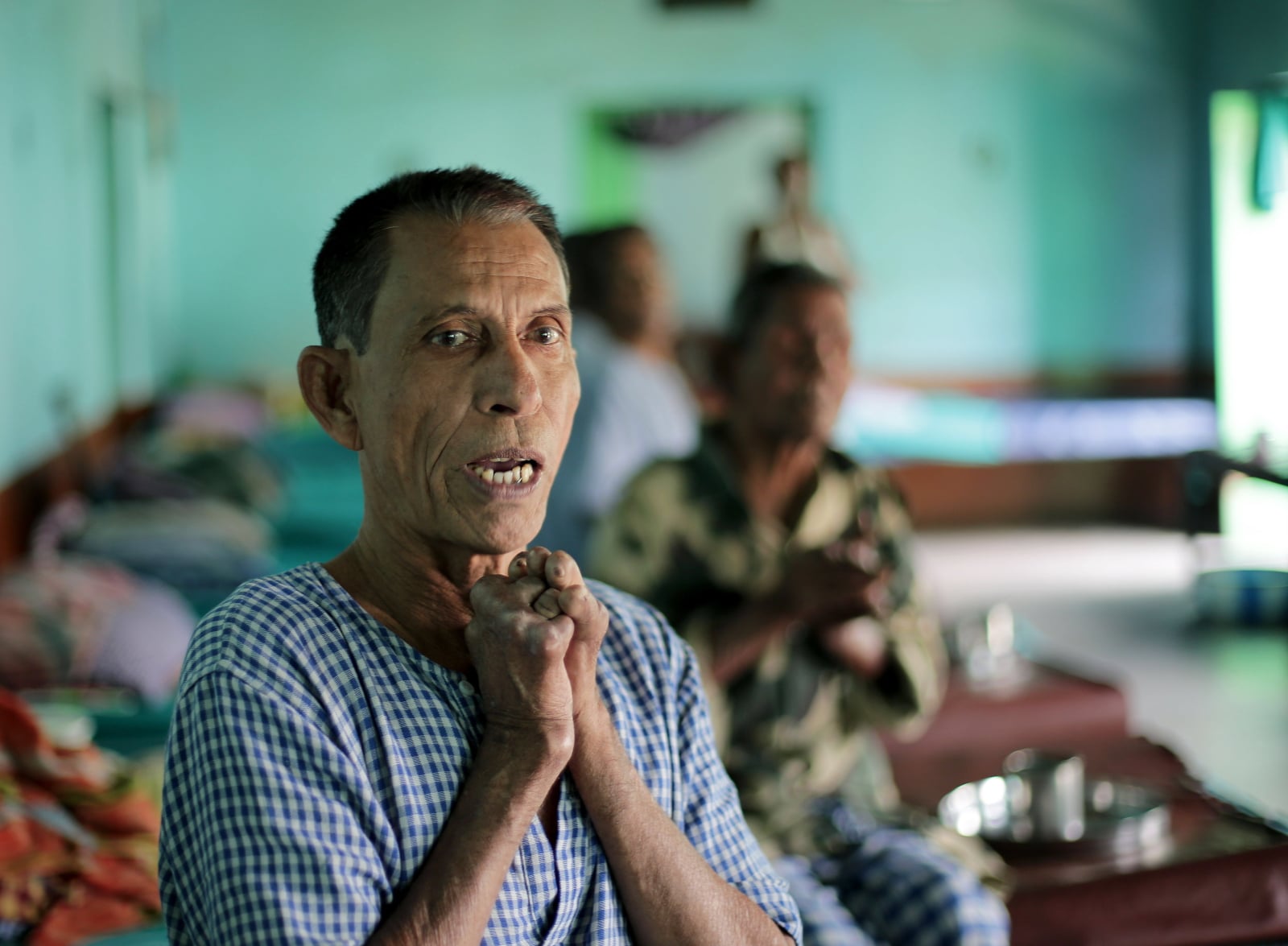
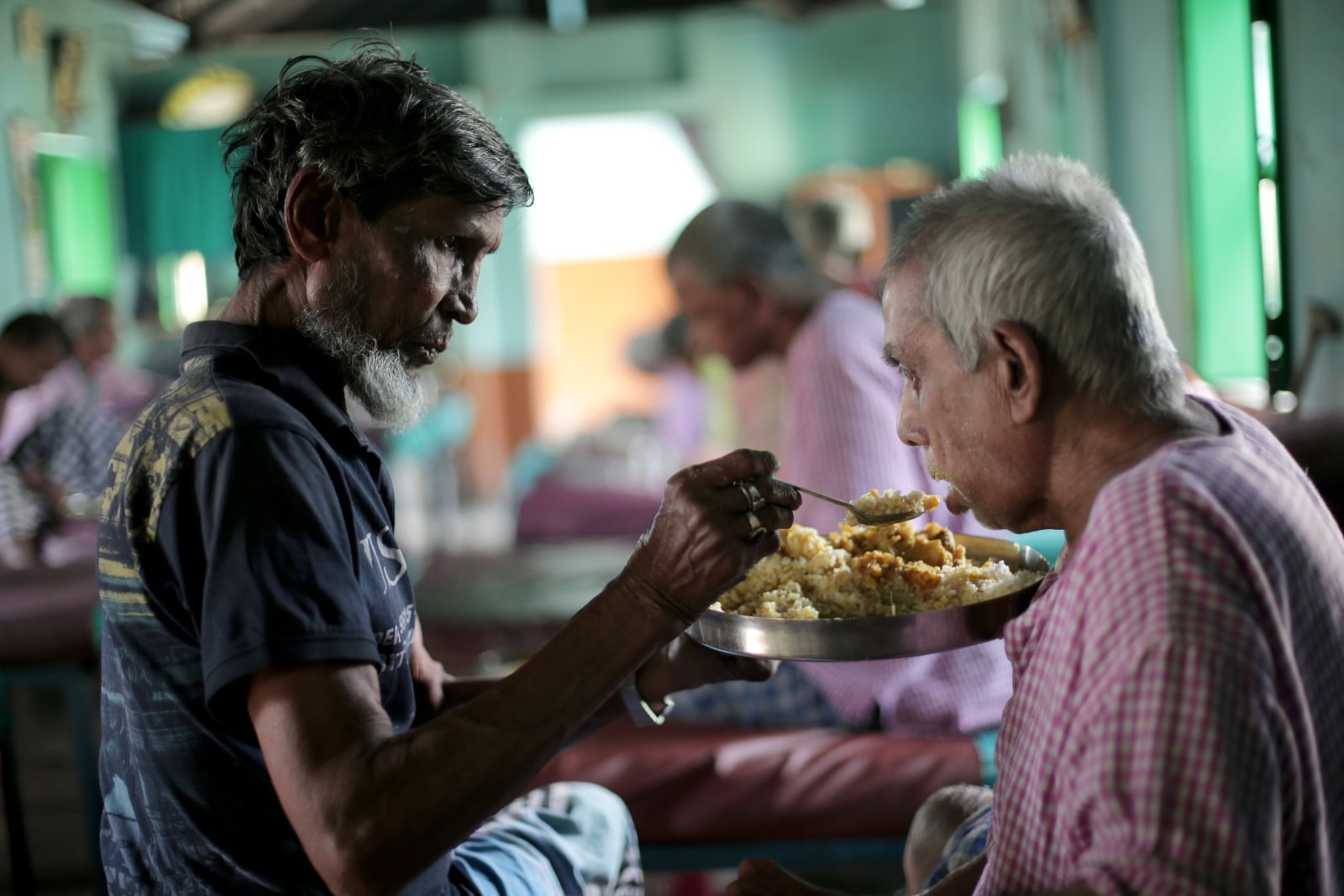

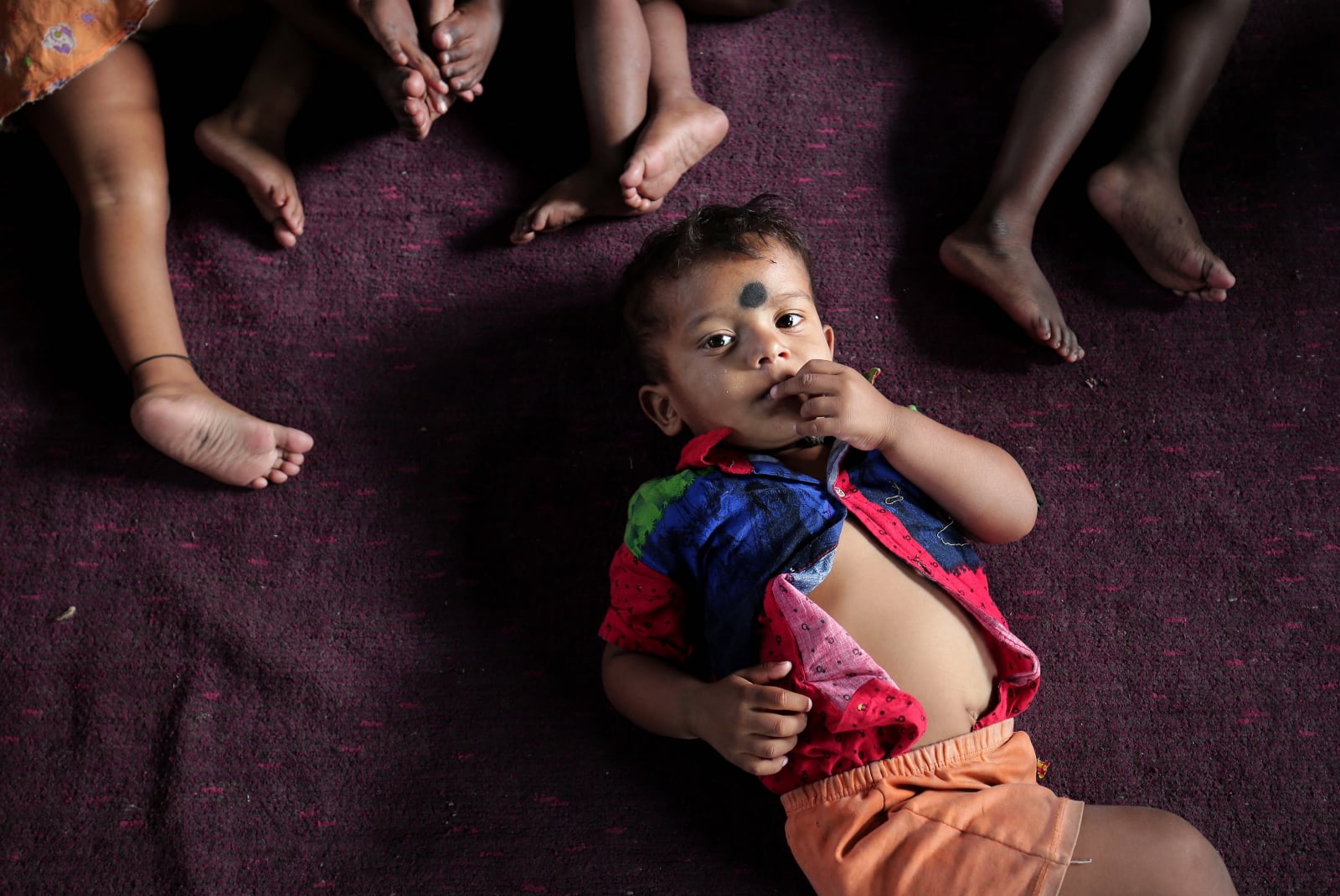
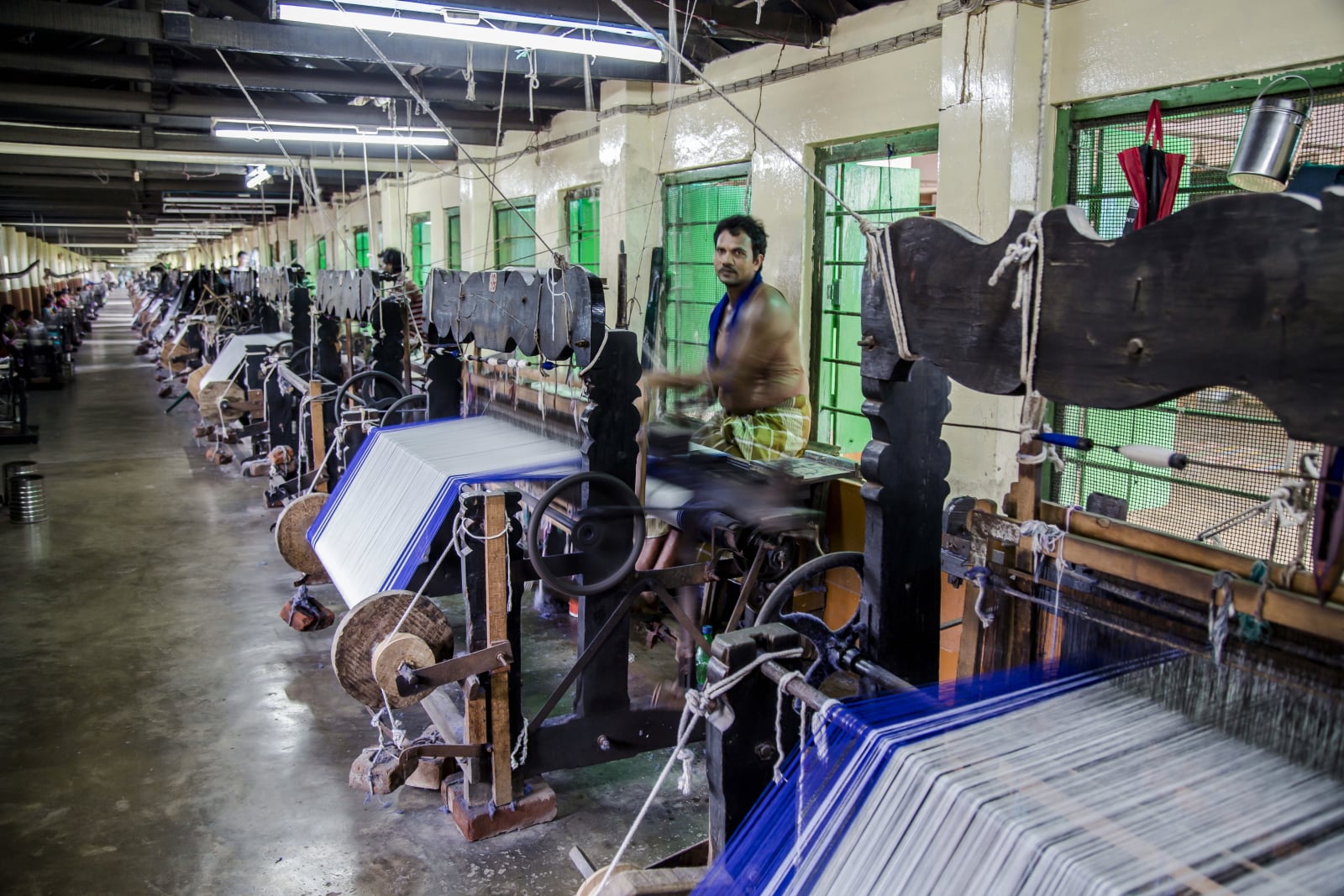
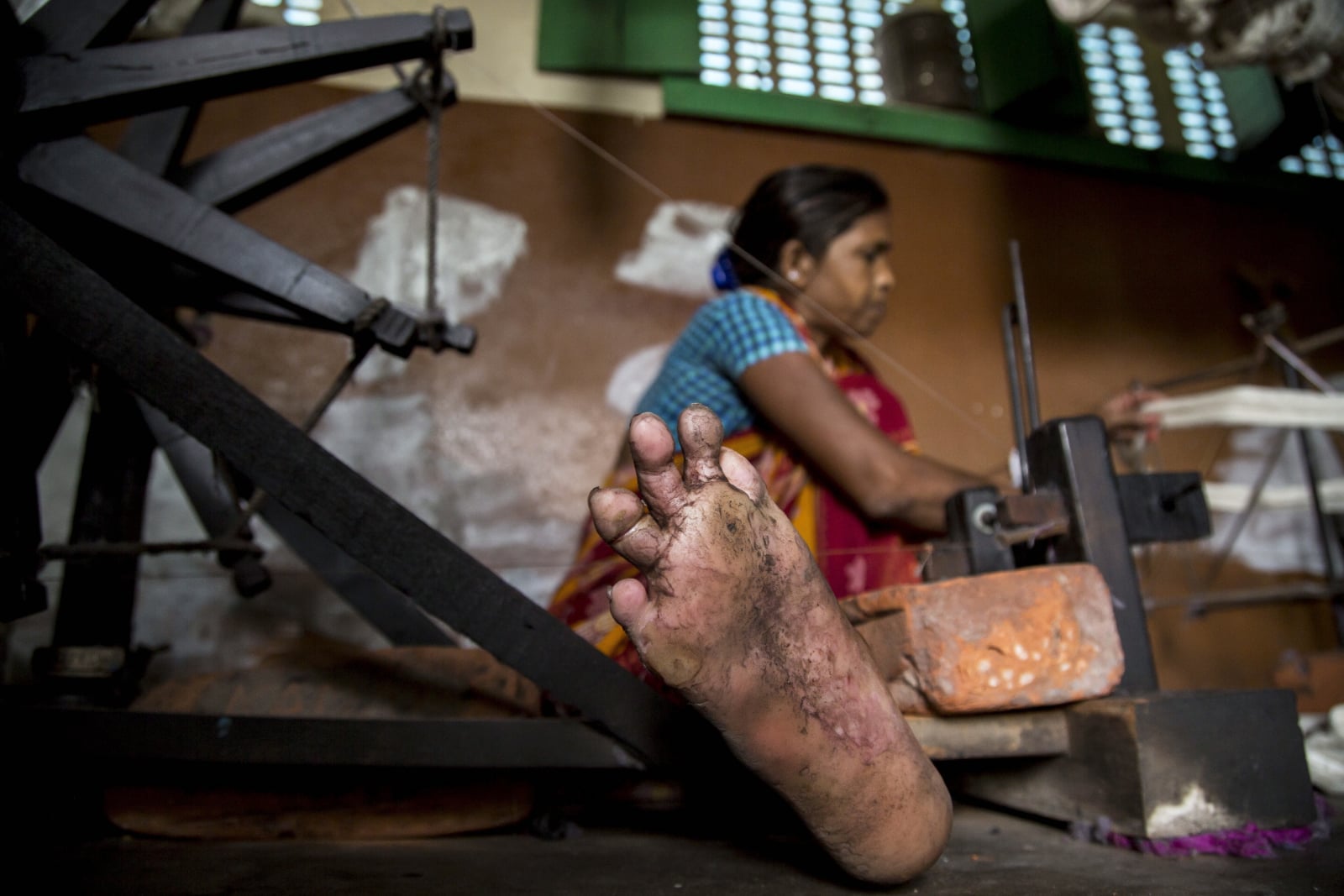
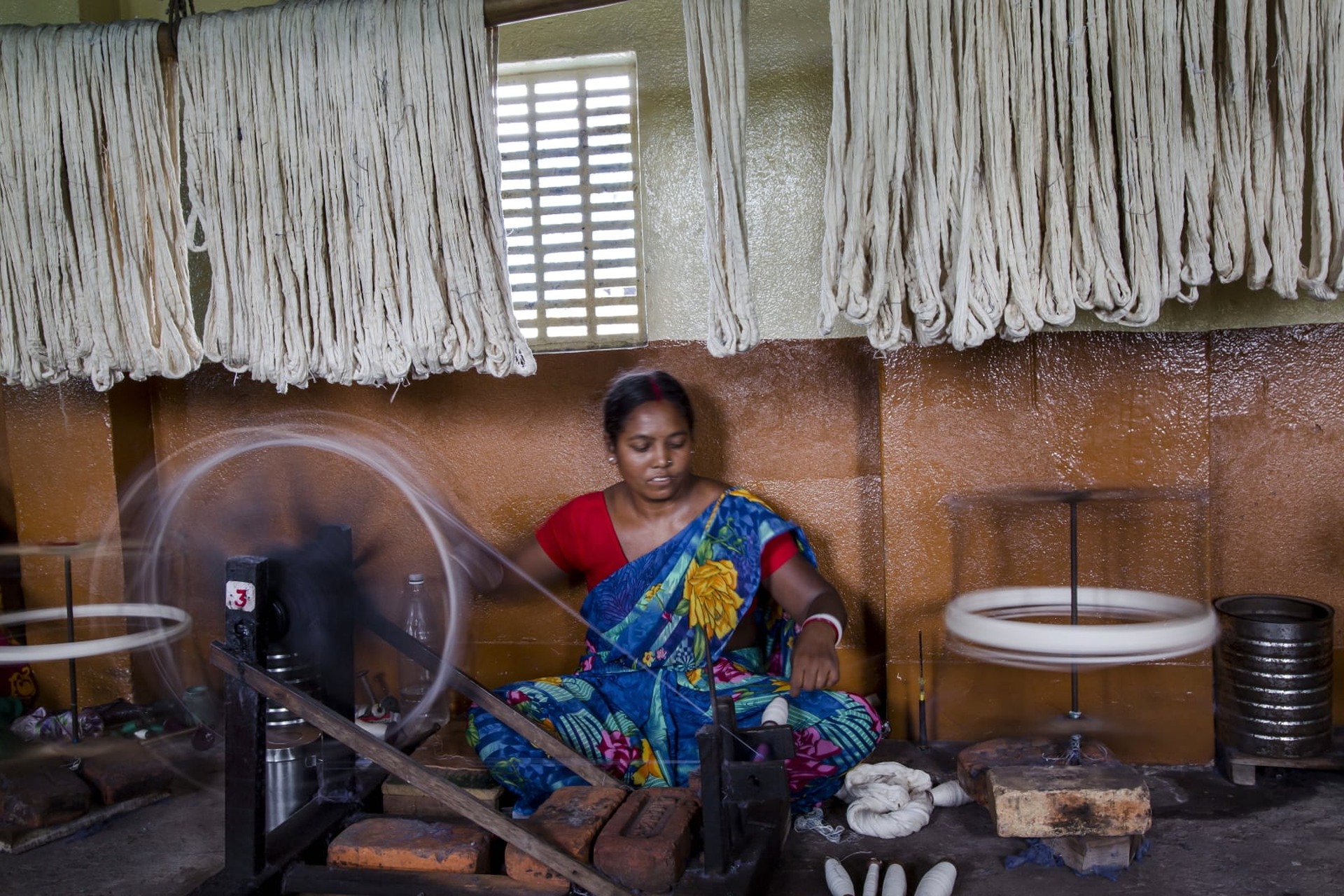

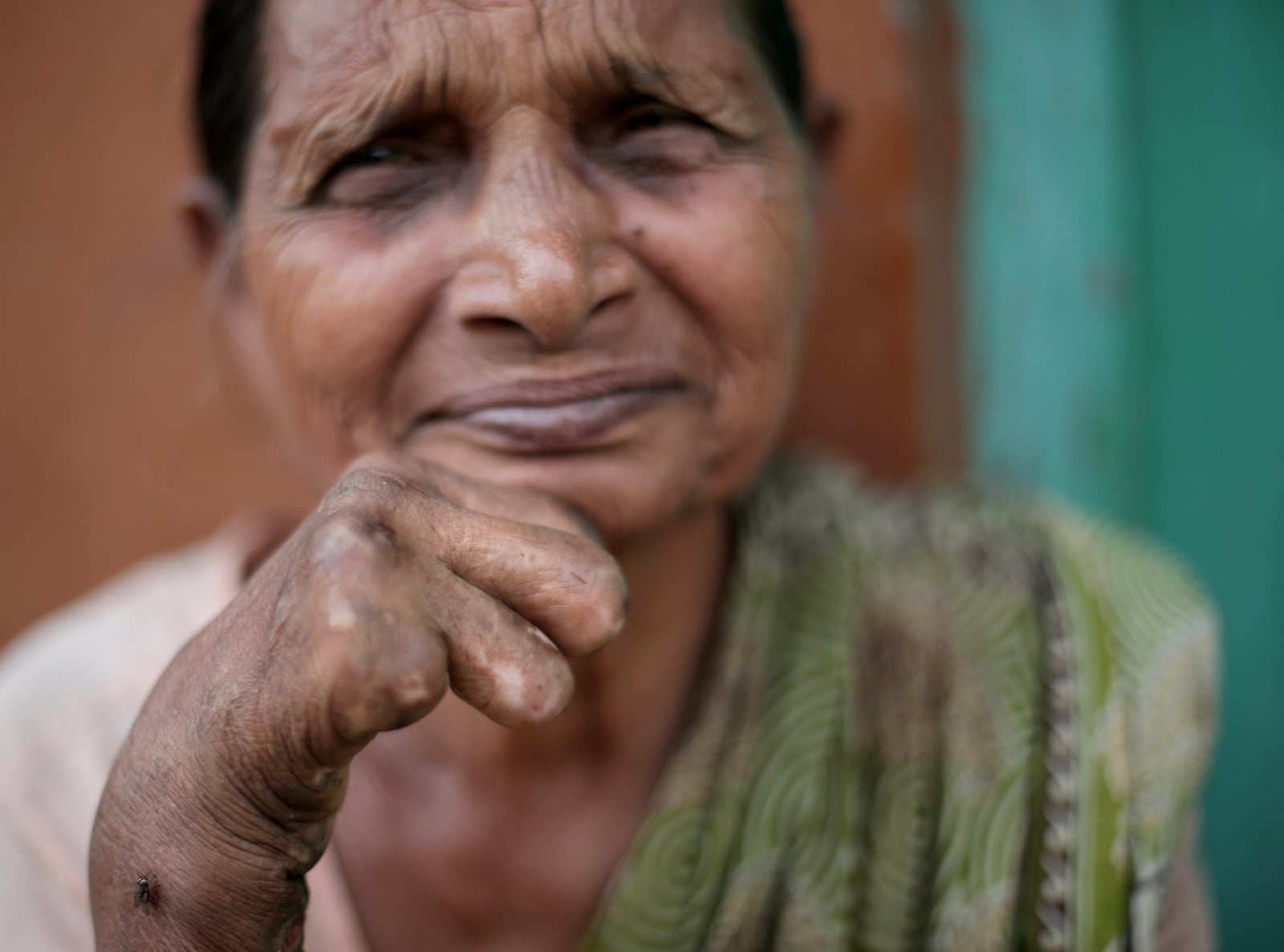

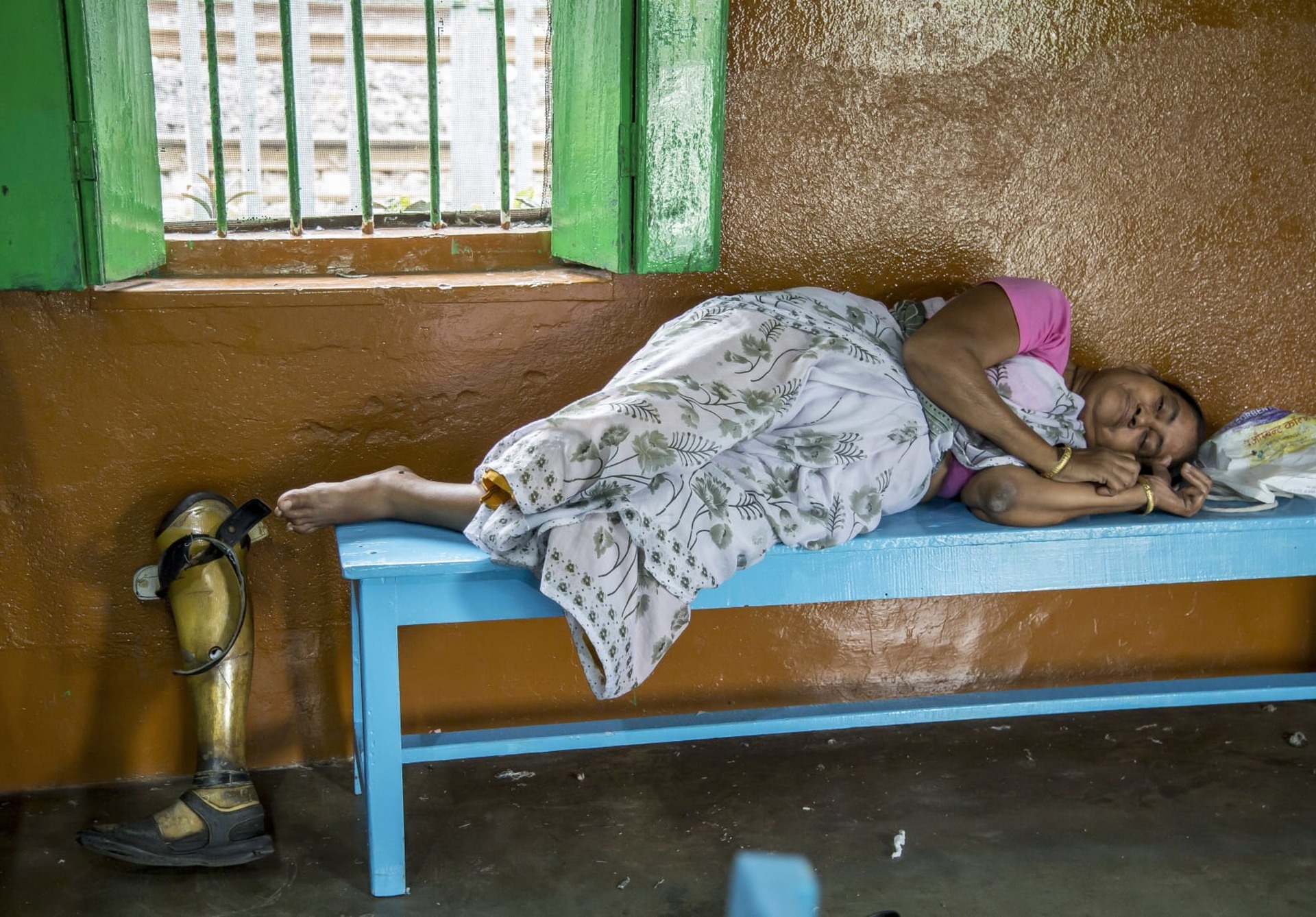

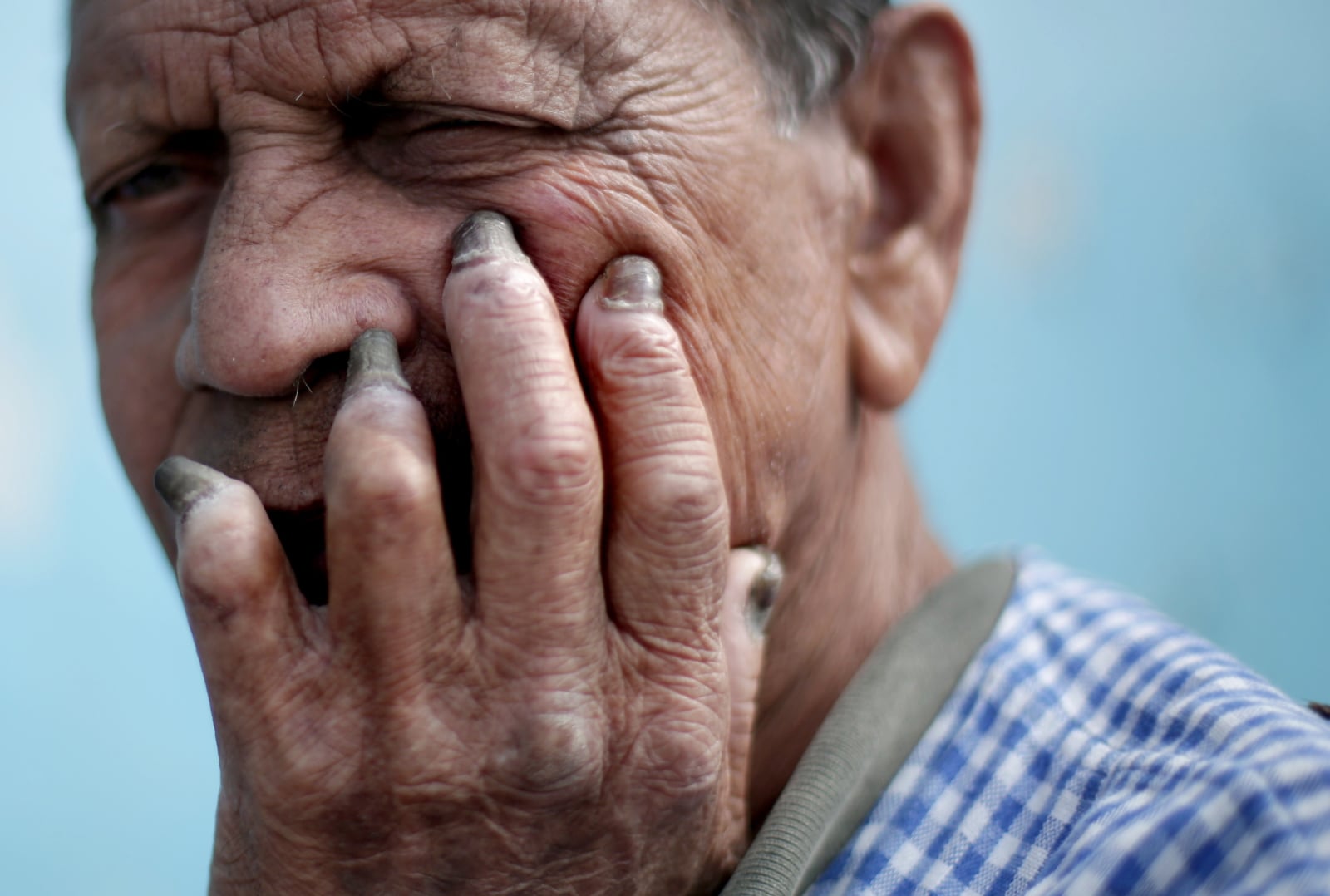

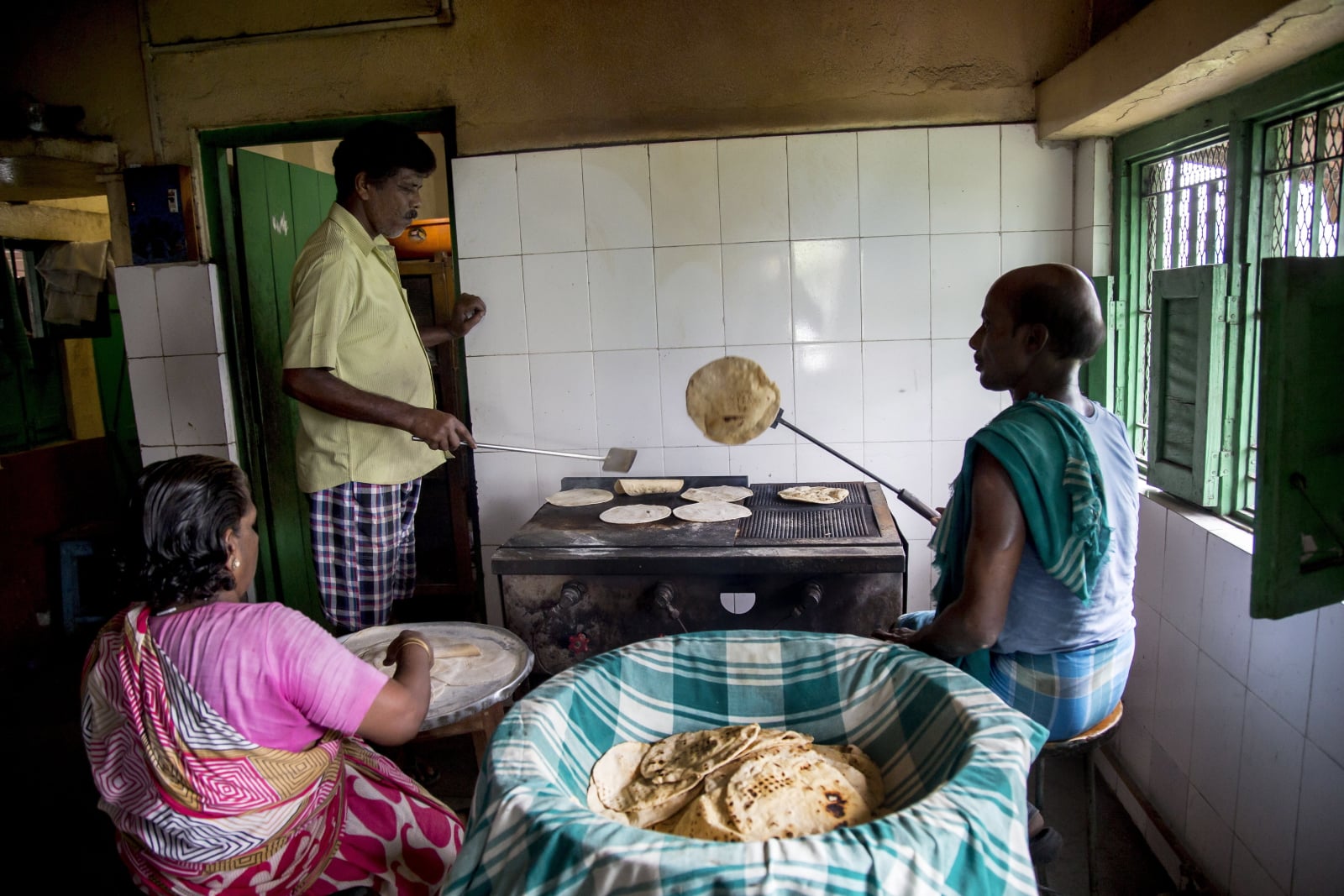





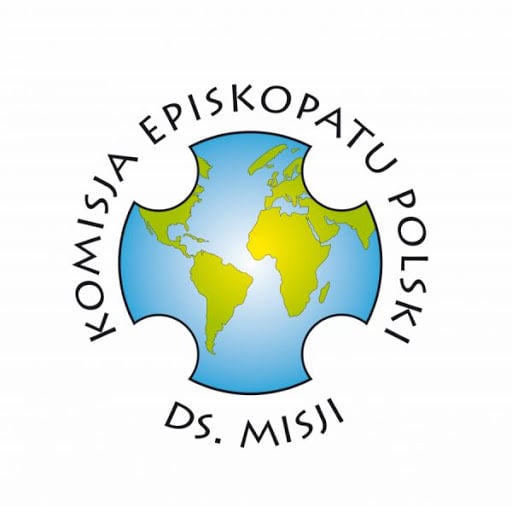
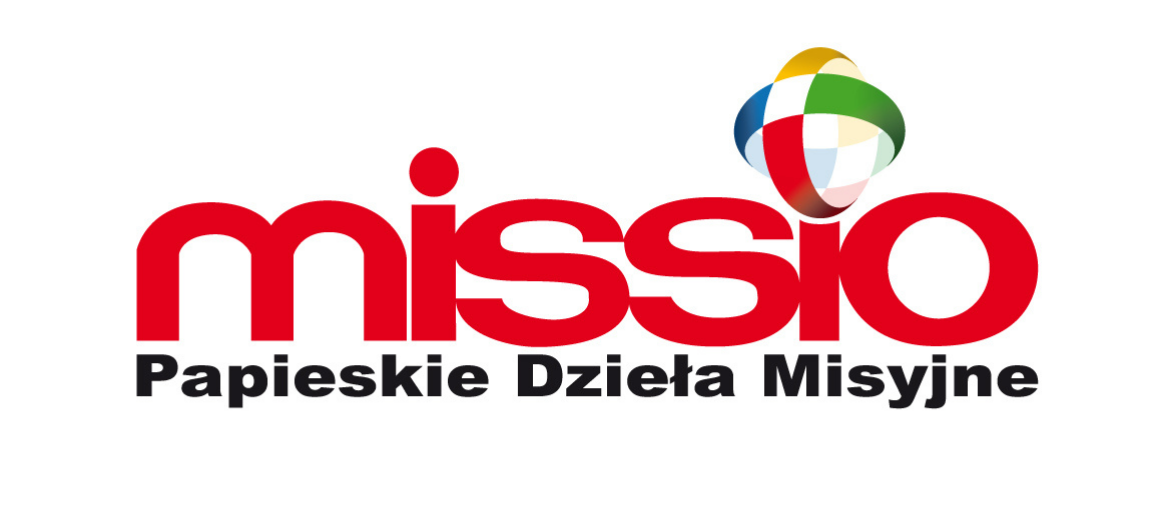


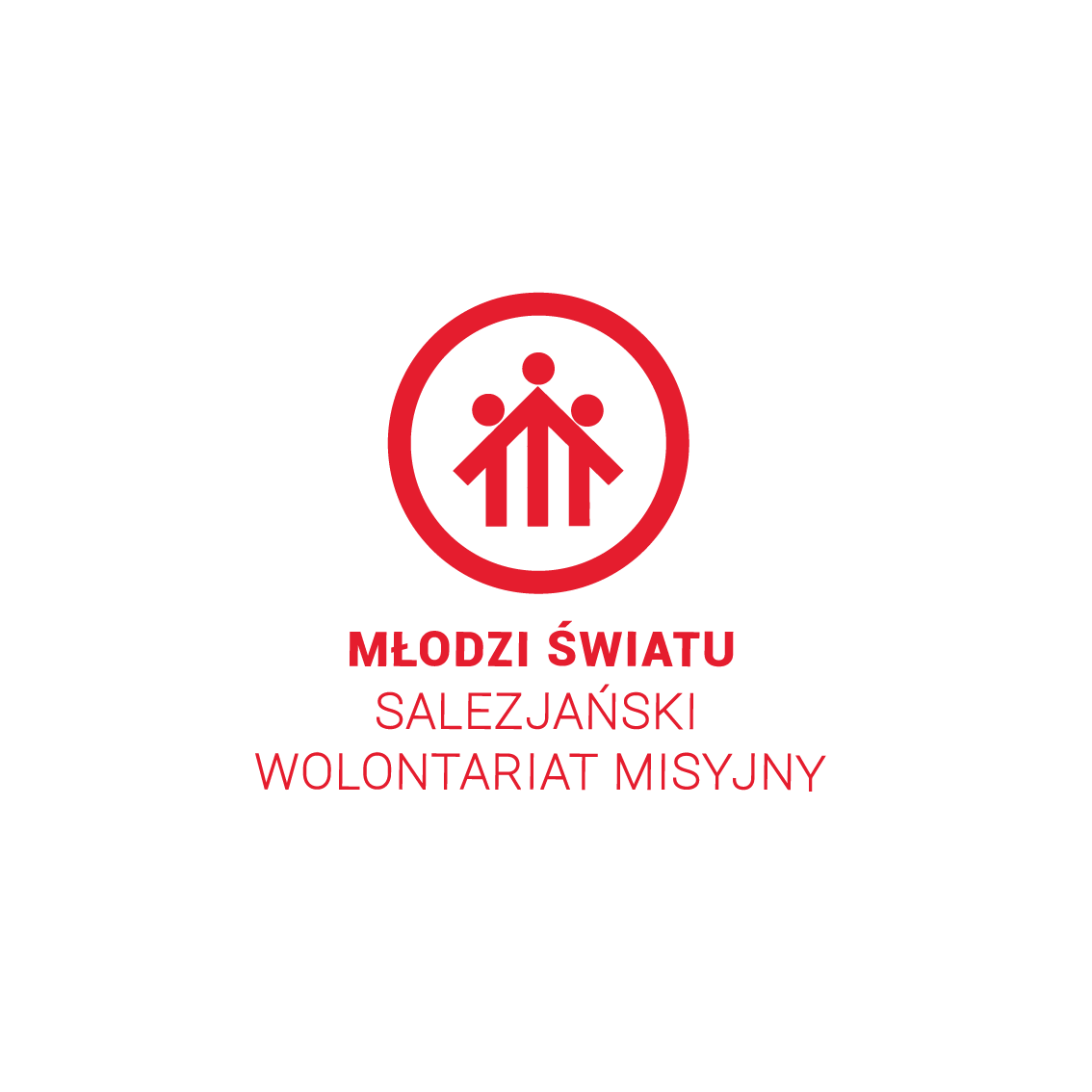
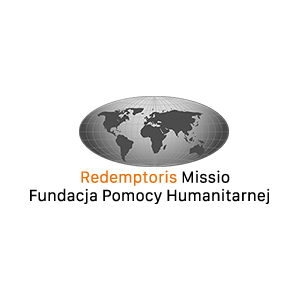




 Wiadomości
Wiadomości Wideo
Wideo Modlitwy
Modlitwy Sklep
Sklep Kalendarz liturgiczny
Kalendarz liturgiczny